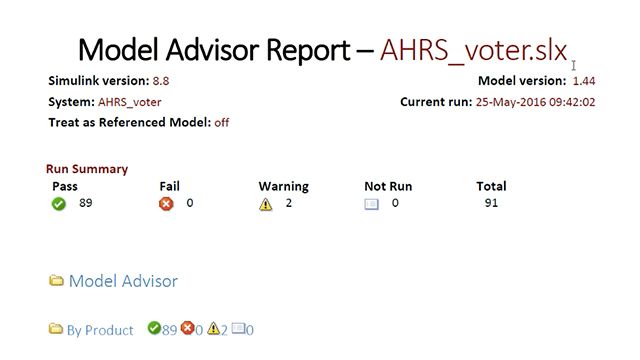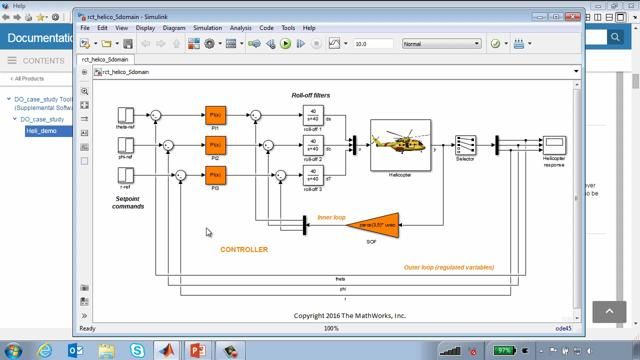Qualified Model Verification – Simulation | Using Qualified Tools in a DO-178C Development Process, Part 3
From the series: Using Qualified Tools in a DO-178C Development Process
Verification of low-level software requirements and architecture spans several objectives in DO-178C. When using Model-Based Design, DO-331 allows the use of simulation as a means of compliance for several of these objectives. Objectives that can be satisfied by simulation are compliance and compatibility with high-level requirements, accuracy and consistency, verifiability, and algorithm accuracy. Simulink® and Stateflow® support desktop simulation using the run button, but in a DO-331 process, it is important to have repeatable test cases and procedures along with test results reports. Simulink Test™ provides the capability to author and organize simulation cases, as well as the ability to automate assessment and reporting of the test results. Some of the features of Simulink Test are the test manager, test harnesses, and test authoring via Test Sequence or Signal Builder blocks. Simulink Test also provides the capability to link tests to requirements using the Requirements Toolbox™ interface. An additional requirement in DO-331 is that model coverage needs to be assessed when verifying compliance to the high-level software requirements. Simulink Coverage™ provides model coverage assessment and it is integrated to run automatically when using Simulink Test. Two reports are provided by the tools: A test results report with pass/fail assessment and a model coverage report. The DO Qualification Kit provides the necessary artifacts to qualify the generation of the test results report, pass/fail assessment, and model coverage reports.
Published: 24 Sep 2024






